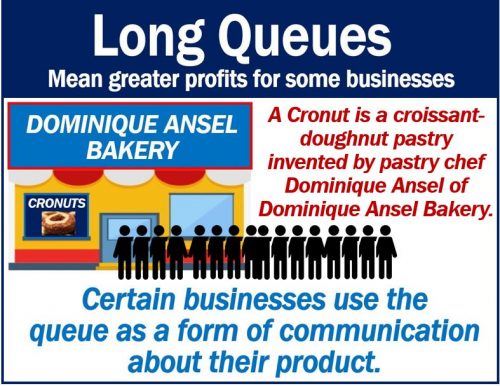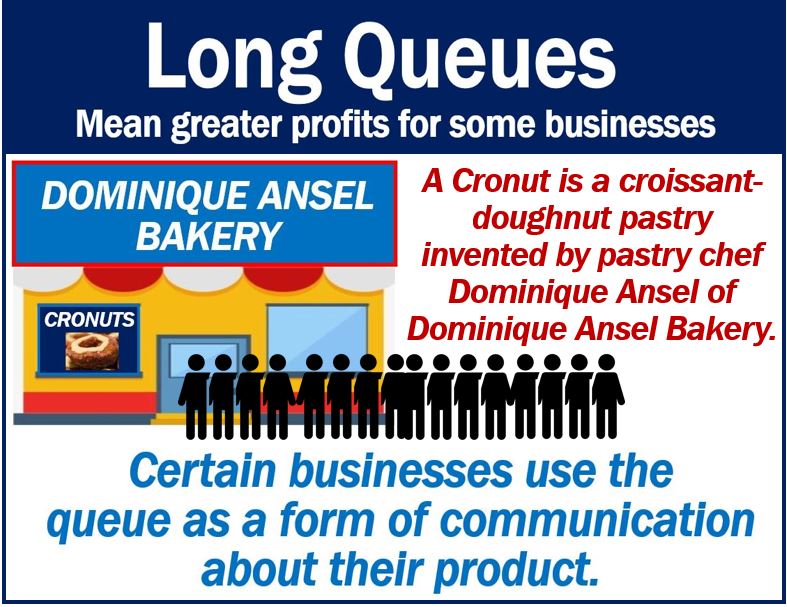Some companies thrive when people wait in line. In other words, for some companies, long queues can mean greater profits. They want people to wait in line.
In 2013, the cronut craze began. Not long after Dominique Ansel’s bakery in SoHo started turning out its croissant-donut hybrid, long queues began to form. Sometimes, there would be more than one-hundred people waiting in line.
According to Laurens Debo, a queuing theory connoisseur, the long queues outside the bakery were the result of a certain business decision that Ansel had made. In the long queues, people would talk about Ansel’s product.
Debo is Associate Professor Of Business Administration, Harvey H. Bundy III T’68 Faculty Fellow, at the Tuck School of Business.
Regarding the long queues that some businesses trigger, Prof. Debo says:
“These businesses signal quality with their long lines, and at the same time they create buzz.”

Are long queues the only way?
However, isn’t there any other way to signal quality that doesn’t require us to stand in line?
There is – the other way is ‘price.’
Higher prices
Prof. Debo says:
“Higher quality means higher costs, and higher costs means higher prices. So, if you see a higher price, you can kind of infer that it must be higher quality.”
Using price, however, comes with its own set of problems. Low-quality firms, for example, may trick uninformed consumers into paying higher prices.
One solution is to charge a lot. Companies can charge so much that low-quality competitors would never dare copy them.
Price vs. long queues
The challenge, says Debo, is for companies to know when to give up signaling via price. Specifically, when to let queues do the work.
Prof. Debo, together with Uday Rajan and Senthil K. Veeraraghavan, are studying companies’ use of prices vs. queues. Specifically, when it is more profitable to use high prices and short lines rather than low prices and long queues.
Rajan is Hermelin Professor of Business Administration, Chair and Professor of Finance and Real Estate, at Michigan Ross. Veeraraghavan is Professor of Operations, Information and Decisions, at the Wharton School, University of Pennsylvania.
Separating and pooling
The researchers analyzed separating and pooling equilibria in a game of queuing that they set up.
Separating and pooling are technical ways we can describe situations in which a high-quality and a low-quality firm charge different prices or the same prices. In this context, we refer to charging different prices and charging the same prices as separating and pooling respectively.
Uninformed customers can gauge quality differentials by the price with a separating equilibrium. However, in a pooling equilibrium, given that the prices are identical, the customers need to rely on another signal to determine quality.
Queue length in a pooling equilibrium
In the context of this study, the other signal is queue length.
The researchers gathered and analyzed data from these equilibria. They found that a firm can earn greater profits in a pooling equilibrium when most of the customers are uninformed about its quality.
In this type of market, the price is low and doesn’t contain any data about quality. However, as long as the long queues signal high quality, demand for the product will be high.
The company subsequently makes a large profit compared to charging a high, informative price. That high price would have resulted in low demand for the product.
Regarding what type of market has this trait, Prof. Debo says:
“Any market at the beginning of innovation, or an existing market with an improved product at the beginning of the product lifecycle.”
Long queues for a new product in this market generate word-of-mouth. Subsequently, more and more people become aware of it.
When to signal via price
However, when more consumers know about it, it eventually becomes time to signal quality via price. That is, if the firm wants to become more profitable.
So, how do we describe the cronut’s situation? Given that it is only available in one place in a city of eight million people, it is in a pretty good situation.
The researchers write:
“Our model naturally applies where there is a constant flow of uninformed consumers, such as the demand for restaurant meals, bakery items, and standby tickets for Broadway shows.”
In other words, prepare to pay for that Hamilton ticket or cronut with your time.

